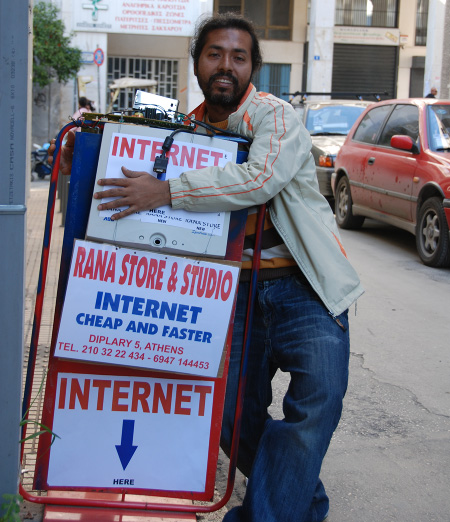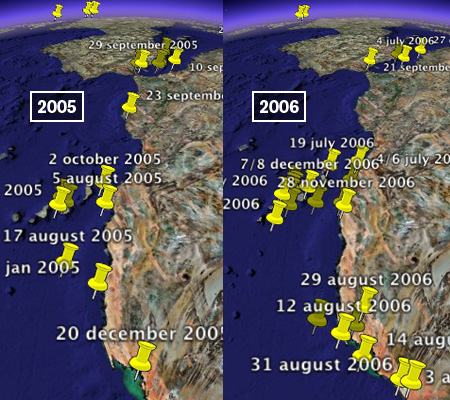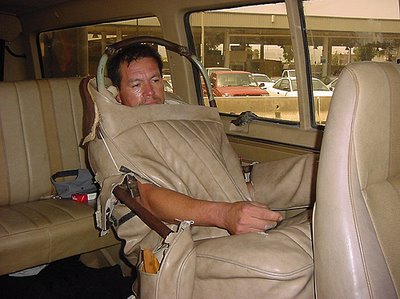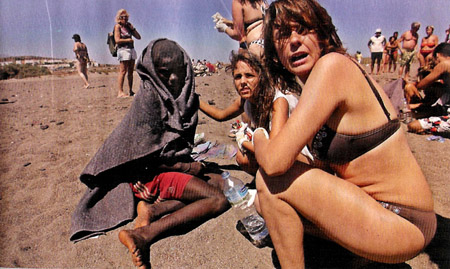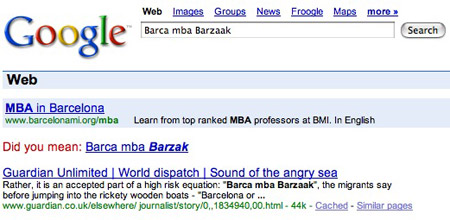Deportation class - for real?
So apparently some rather scary dudes from Austria (see picture below, but generally all males from Austria who are older than 50 give me the creeps) have come up with a really sick idea: Set up a charter airline that specializes in deportation flights from Europe to the warmer parts of this globe. If you believe the press reporting about their yet-to-be-realized plan then they are all about saving european taxpayers a couple of euros and making those forced deportations a little bit more enjoyable for everyone involved:
“With a professional service the deportations will be faster, chains will not be needed and the deportees can enjoy a meal.” The planned flights will have guards, medical staff and a representative of a human rights group on board, though there is no immediate news of plans for in-flight entertainment or a frequent-flyer scheme. [taken from an article from dermobilitaetsmanager.de, a website which advertises itself as the prime magazine about business travel]
Don’t really know where to start here. maybe with the ‘brilliant idea’ of having some clueless NGO provide in-flight legitimation. Mo doubt that there will be enough ‘human rights groups’ who are just waiting for that opportunity (they probably teach this kind of stuff during 1st year introduction classes for political science and communication studies students now). Or with the fact that they won’t have a frequent-flyer scheme? How lame is that? I mean even Lufthansa’s deportation classhad one way back in 2002!
But i guess none of this really matters. To figure out where this idea comes from, you just need to take a good look at the three people behind this ‘plan’ (deportation lawyer Hermann Heller, aviation consultant Heinz Berger and entepreneur Carl Julius Wagner):
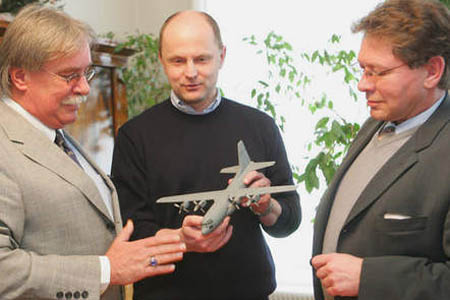 The picture pretty much tells it all: combine a sick obsession for military aircraft, with the urge to be some kind of modern day slave master and your wet dreams will inevitably make you fantasize about ‘asylum airlines’…
The picture pretty much tells it all: combine a sick obsession for military aircraft, with the urge to be some kind of modern day slave master and your wet dreams will inevitably make you fantasize about ‘asylum airlines’…
As usual the google ad-words engine is one spot on with its commentary sponsored links. the story on the mobilitäts manager site pulls up two google adds: one that suggests a probably even cheaper means of transport (but then these low cost airlines do not really fly outside of Europe so they are pretty much worthless when it comes to deportations) and the second one suggests a the next step for the deportees after they have finished ‘enjoying their meal’: Apply for a visa for the US:



